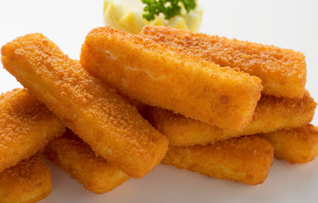 s a slight increase in fish finger sales in Europe, due in part to higher availability of imported Alaska pollock.
s a slight increase in fish finger sales in Europe, due in part to higher availability of imported Alaska pollock.The report, provided by the European Market Observatory for Fisheries and Aquaculture Products, shows an increase in German domestic markets since 2009, which coincides with growing available volumes from China and the United States.
The report shows imports of pollock into Germany, the largest exporting country of breaded fish and fish fingers. The country produces 45 percent of E.U. production and 53 percent of E.U. exports, with 95 percent of its exports of breaded fish and fish fingers going to other E.U. countries.
According to the report, imports from America increased in 2012 for the third year in a row, with Chinese imports remaining stable that year. Russian imports in 2012, according to the report, plummeted by 43.8 percent, but China and the United States are principal suppliers to Germany, with China providing 60 percent of total imports to Germany of Alaska pollock.
Along with being the principal exporter to the E.U., German factories also showed the steadiest and lowest production costs, and export prices for breaded fillets have steadily dropped since 2009, going from EUR 3.41 (USD 4.66) to EUR 3.17 (USD 4.33) in 2012.





